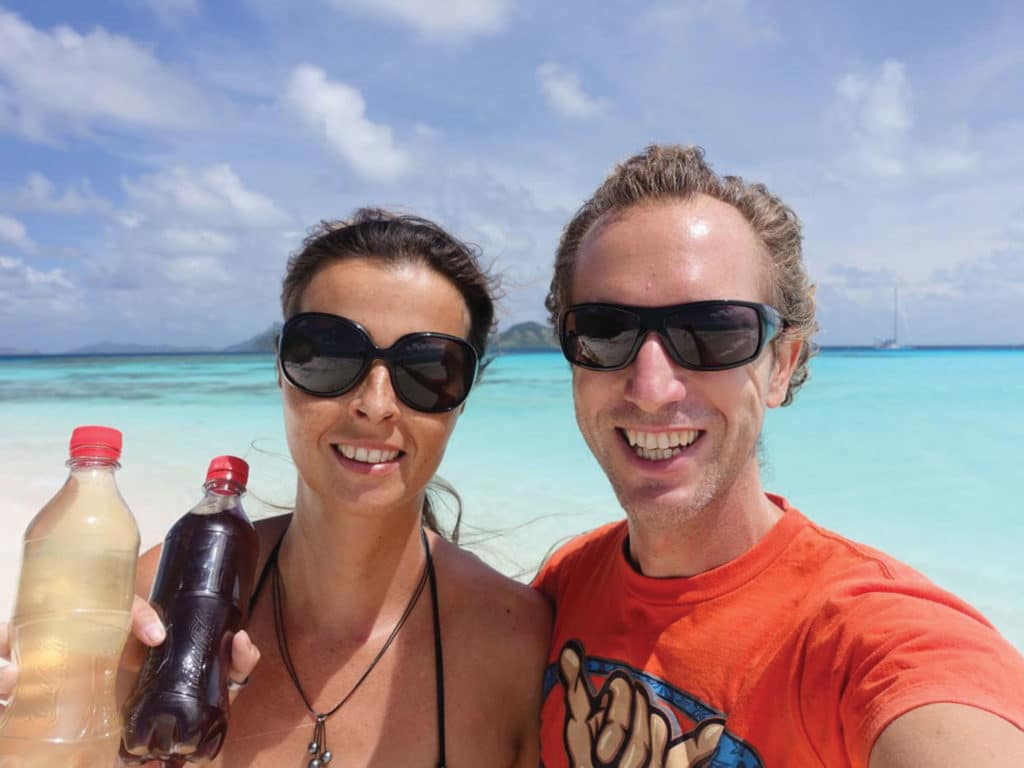
What’s a sunset without a sundowner? Quitting time after a messy day in the engine room without an after-work beer? No matter how much storage a boat has, at some point, the liquid provisioning trickles out. Homebrewing—or rather boat-brewing—is the beverage solution for cruisers who enjoy hanging out in remote areas without beach bars or supermarkets.
When we set out toward the Pacific seven years ago, we knew that booze would be costly in many areas (if available at all). Therefore, we filled up our boat with boxed wine, cases of beer and some rum in Panama. When we met a singlehander from New Zealand in one of our first anchorages in French Polynesia who invited us to try his homemade beer, our reaction was more amused than interested: What a weirdo, we thought nonchalantly.
A year later, we were still in French Polynesia and had run out of Panamanian booze. Motivated by high prices for alcohol, we tried our luck with Polynesian recipes for komo—sugar water fermented with baker’s yeast that yields strong results. The locals brew komo in 200-liter (52-gallon) barrels, so we did the math, and filled regular 1-liter bottles with a similar ratio. After cleaning up the sticky mess from an exploded container, we had a go at DIY airlocks, which prevented further accidents but did nothing to conceal the socklike smell and taste of the baker’s yeast.
We searched online and ordered from homebrew shops. Starting from scratch and boiling hops seemed overly ambitious, so we went for ready-made beer kits. A 4-pound can yields 23 liters (48 US pints) and contains all that’s needed. Just pour the thick syrup into a large container, add water, sugar and the included packet of yeast, and wait for a week. Then comes the tricky part, because you need a whole load of empty, sterilized pressure bottles (old soda bottles work) for the golden liquid. A pinch of sugar in each bottle sets off a second fermentation to make the beer fizzy. There is a whole range of different beer types available as beer kits, but inventive boat-brewers take it a step further and add aroma hops, young pine tips, or even coffee beans for experimental flavors. After another two weeks of patiently waiting, the beer’s ready to be tasted!
As the sunset is painting the sky over the lagoon in shades of pink and orange, we clink our glasses. Yes, homebrewing equipment takes up some space and the procedure is rather time-consuming, but the luxury of sipping self-made Pitufa-brew all on our own in paradise is well worth the effort. Cheers!
How To Get Started
To start brewing beer aboard, you’ll need:
- 1 beer kit (e.g., Muntons Export Pilsner)
- 1 big container (23 liters/ 6 US gallons)
- 23 one-liter bottles or 46 half-liter bottles (regular plastic soda bottles can take the pressure)
- 1 air lock (to put on the big container)
- Disinfectant to prepare the gear (baby-bottle disinfectant from the pharmacy or special disinfectant from the homebrew shop)
- Enough patience to make it through 3 weeks of waiting time








